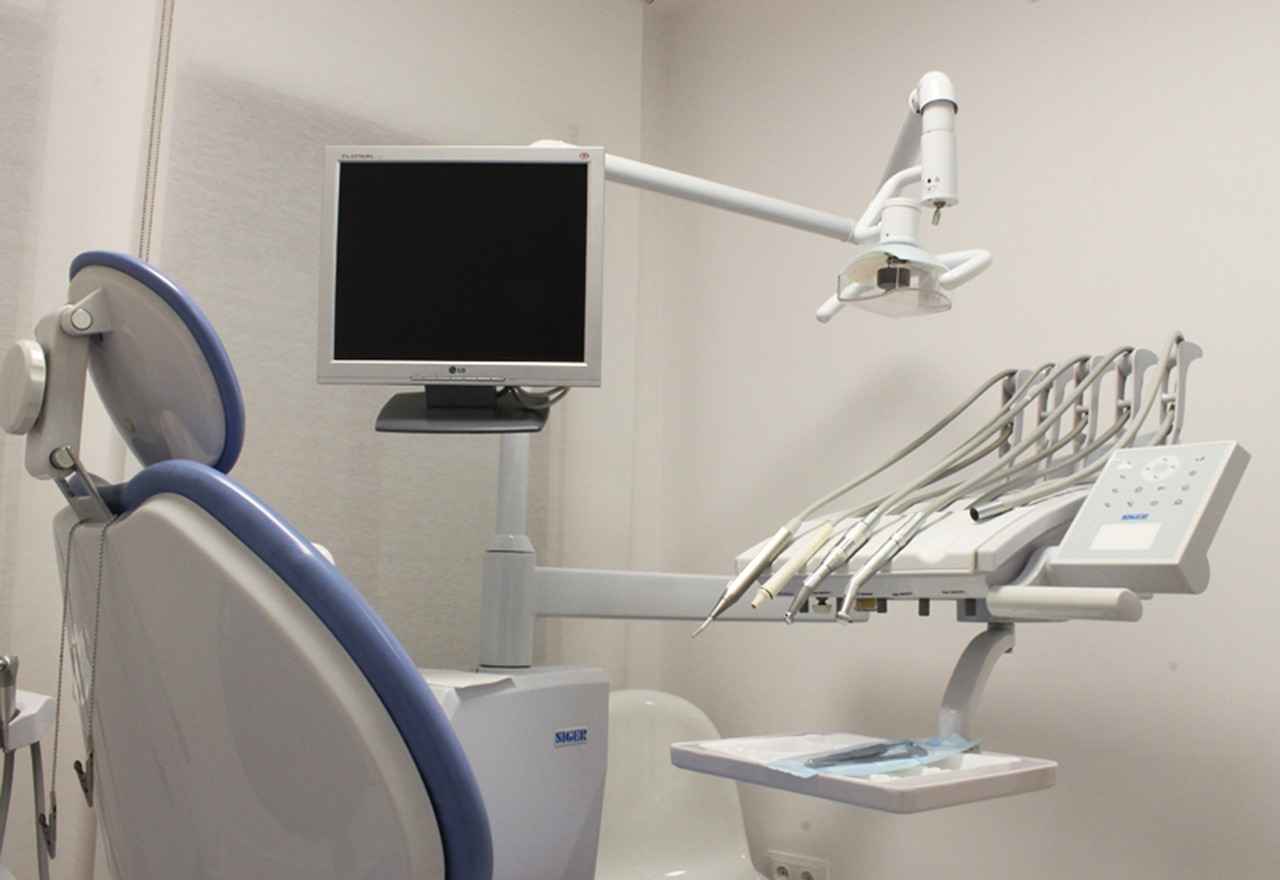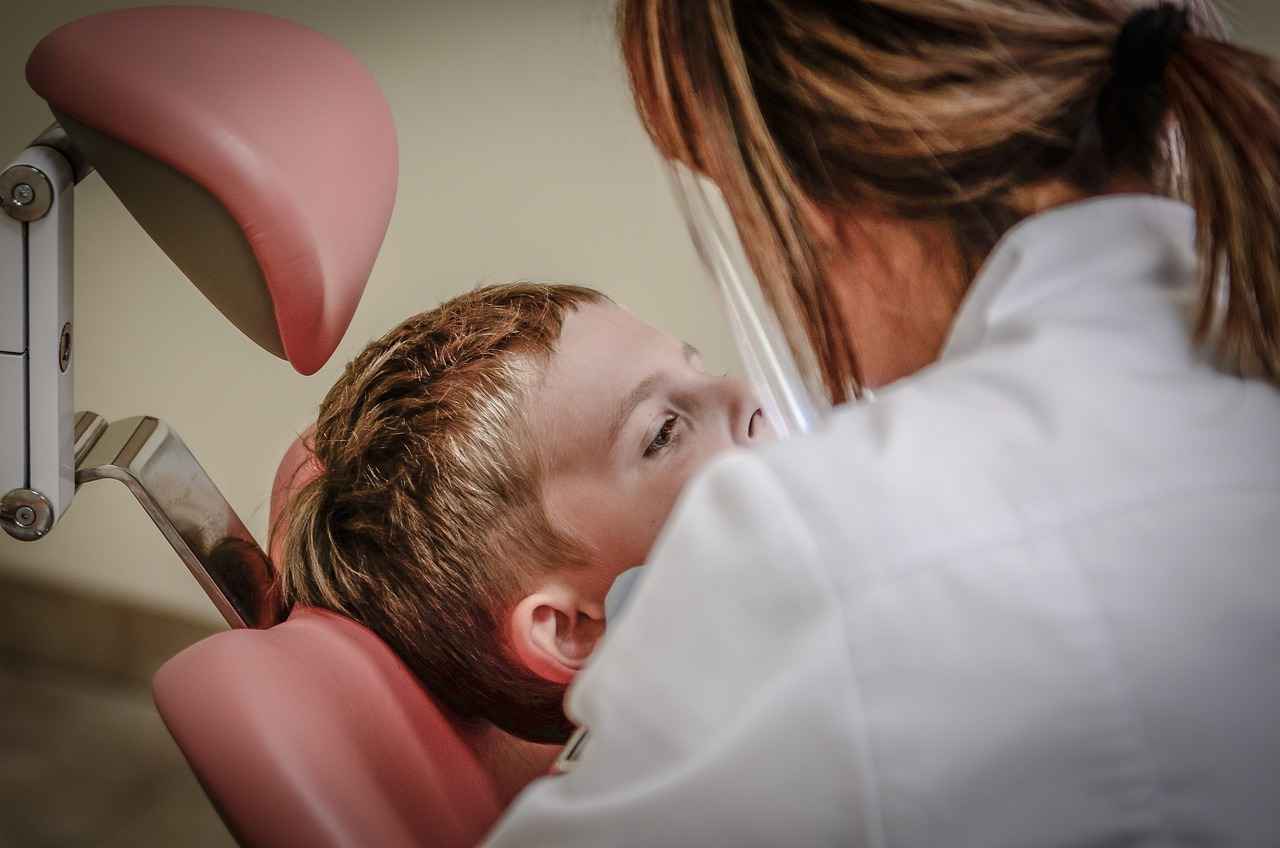This article provides essential insights into identifying subpar hair transplant clinics. By understanding key red flags, patients can make informed decisions and ensure they receive quality treatment for their hair restoration needs.
Understanding Hair Transplant Procedures
Hair transplant procedures can vary significantly. It’s crucial to understand the different techniques available, such as Follicular Unit Extraction (FUE) and Follicular Unit Transplantation (FUT), to assess the quality of care offered by a clinic.
Researching Clinic Credentials
Investigating a clinic’s credentials is vital. Look for board certifications, affiliations with recognized medical organizations, and the qualifications of the surgeons performing the procedures.
- Surgeon Experience and Expertise
- Patient Reviews and Testimonials
- Before-and-After Photos
Surgeon Experience and Expertise
The surgeon’s experience plays a critical role in the success of hair transplants. Ensure you review their track record, including the number of procedures performed and patient outcomes.
Patient Reviews and Testimonials
Reading patient reviews and testimonials can provide valuable insights into the clinic’s reputation. Look for consistent feedback regarding results, care, and overall patient satisfaction.
Before-and-After Photos
Examining before-and-after photos can help gauge the clinic’s skill. Authentic images should showcase a range of results rather than just a few select cases.
Consultation Process
A thorough consultation is key to a successful hair transplant. Evaluate how the clinic conducts its consultations and whether they address all your concerns and questions.
Warning Signs of Poor Quality Clinics
Certain red flags can indicate a clinic is not up to standard. Recognizing these signs can help you avoid potential pitfalls in your hair restoration journey.
- Unrealistic Promises
- Pressure to Commit Quickly
Unrealistic Promises
Be wary of clinics that guarantee specific results or offer overly optimistic outcomes. Hair restoration is a complex process with varying results based on individual factors.
Pressure to Commit Quickly
A reputable clinic will allow you time to make an informed decision. If you feel pressured to book a procedure immediately, it may be a sign of questionable practices.
Cost Considerations in Hair Transplants
While cost should not be the sole factor in choosing a clinic, it is essential to understand pricing structures. Beware of clinics offering significantly lower prices than competitors.
- Hidden Costs and Fees
- Financing Options
Hidden Costs and Fees
Clarifying the total cost of the procedure upfront is crucial. Ask about any hidden fees that may arise during the process to avoid unexpected financial burdens.
Financing Options
Many reputable clinics offer financing options to make hair transplants more accessible. Understanding these options can help you make a more informed financial decision.
Post-Transplant Care and Follow-Up
Quality clinics emphasize the importance of post-transplant care. Inquire about their follow-up procedures and support to ensure optimal healing and results.
- Patient Support Resources
- Long-Term Results and Maintenance
Patient Support Resources
A good clinic will provide resources and support for patients post-surgery. This includes guidance on recovery, potential side effects, and long-term care.
Long-Term Results and Maintenance
Discussing long-term results and maintenance plans is essential. A reputable clinic will help you understand what to expect after the procedure and how to maintain your results.
Conclusion: Making an Informed Decision
Choosing the right hair transplant clinic is a significant decision. By recognizing red flags and doing thorough research, you can ensure a successful and satisfying hair restoration experience.

Understanding Hair Transplant Procedures
When considering a hair transplant, it’s essential to recognize that procedures can differ significantly based on the techniques employed. Two of the most common methods are Follicular Unit Extraction (FUE) and Follicular Unit Transplantation (FUT). Understanding these techniques can greatly impact your decision-making process when selecting a clinic for your hair restoration needs.
Follicular Unit Extraction (FUE)
FUE is a minimally invasive technique where individual hair follicles are extracted from the donor area and transplanted to the thinning or balding areas. This method is known for its shorter recovery time and less visible scarring compared to traditional methods. Patients often appreciate the natural-looking results that FUE can provide.
Follicular Unit Transplantation (FUT)
In contrast, FUT involves removing a strip of skin from the donor area, from which hair follicles are then harvested. This method may be suitable for patients requiring a larger number of grafts and can sometimes yield higher follicle counts in a single session. However, it typically results in a linear scar, which may be a concern for some individuals.
Assessing Clinic Quality
When evaluating a clinic, it’s crucial to consider the techniques they specialize in. A reputable clinic should offer both FUE and FUT, allowing patients to choose the method that best suits their needs. Additionally, inquire about the clinic’s success rates and patient satisfaction levels, as these factors can provide insight into the quality of care offered.
Conclusion
In conclusion, understanding the differences between hair transplant techniques is vital to making an informed decision. By knowing what to look for in a clinic and the procedures available, you can ensure a successful hair restoration experience.

Researching Clinic Credentials
is an essential step in ensuring that you receive the best possible care for your hair restoration needs. With many clinics available, it is crucial to differentiate between reputable establishments and those that may not meet industry standards.
When investigating a clinic’s credentials, consider the following factors:
- Board Certifications: Verify if the clinic’s surgeons are board-certified in dermatology or plastic surgery. This certification indicates that they have undergone rigorous training and adhere to the highest medical standards.
- Affiliations: Look for affiliations with recognized medical organizations, such as the American Academy of Dermatology or the International Society of Hair Restoration Surgery. These affiliations often reflect a commitment to ongoing education and adherence to ethical practices.
- Surgeon Qualifications: Research the qualifications of the surgeons performing the procedures. Their education, training, and experience can significantly impact the success of your hair transplant.
Additionally, it is beneficial to examine the clinic’s track record. This includes:
- Success Rates: Inquire about the clinic’s success rates and patient satisfaction levels. A reputable clinic should be transparent about their outcomes.
- Patient Testimonials: Look for reviews and testimonials from former patients. Positive feedback can provide insight into the clinic’s quality of care and results.
- Before-and-After Photos: Authentic before-and-after photos can help you assess the clinic’s skill and the results you can expect.
In summary, thorough research into a clinic’s credentials is vital for making an informed decision about your hair transplant. By focusing on board certifications, affiliations, and surgeon qualifications, you can increase your chances of a successful and satisfying hair restoration experience.
Surgeon Experience and Expertise
The success of a hair transplant largely hinges on the expertise and experience of the surgeon performing the procedure. It is essential for potential patients to conduct thorough research into the qualifications and track record of any surgeon they are considering. This includes examining the number of procedures they have performed, as well as the overall outcomes of those procedures.
When evaluating a surgeon’s experience, consider the following:
- Years of Practice: A surgeon with several years of experience is likely to have encountered a variety of cases and challenges, which can enhance their skill set.
- Specialization: Look for surgeons who specialize specifically in hair restoration, as their focused training can lead to better results.
- Volume of Procedures: Surgeons who perform a higher number of hair transplants may have honed their techniques, leading to more consistent outcomes.
- Patient Outcomes: Research before-and-after results from previous patients to gauge the effectiveness of the surgeon’s work.
- Continued Education: A commitment to ongoing education and staying current with the latest techniques in hair restoration is a positive indicator of a surgeon’s dedication to their craft.
Additionally, it is beneficial to seek out patient testimonials or reviews that highlight the experiences of others. These can provide invaluable insights into the surgeon’s skills and the overall quality of care provided by the clinic. A reputable surgeon will be transparent about their experience and will likely be happy to share their success stories and patient feedback.
In conclusion, taking the time to thoroughly investigate a surgeon’s experience and expertise is crucial for anyone considering a hair transplant. By doing so, patients can significantly increase their chances of achieving satisfactory results and a successful hair restoration journey.
Patient Reviews and Testimonials
play a crucial role in assessing the quality of a hair transplant clinic. They provide prospective patients with firsthand accounts of others’ experiences, allowing for a more informed decision-making process. By reading these reviews, individuals can gain insights into the clinic’s reputation, the effectiveness of procedures, and the level of care provided.
When evaluating patient feedback, it is essential to look for consistent themes in the reviews. For example, if multiple patients highlight the success of their procedures and express satisfaction with the results, this is a strong indicator of the clinic’s capabilities. Conversely, if numerous reviews mention dissatisfaction or complications, it may be a red flag.
Moreover, consider the overall tone of the testimonials. Positive reviews often emphasize not just the results, but also the quality of patient care and the professionalism of the staff. Look for mentions of the clinic’s environment, the attentiveness of the medical team, and how well patients felt their concerns were addressed. These factors are critical in ensuring a comfortable experience during such a personal procedure.
Another important aspect to consider is the recency of the reviews. Clinics may change management, staff, or techniques over time, so recent testimonials can provide a clearer picture of the current state of the clinic. Websites like RealSelf or Healthgrades can be excellent resources for finding up-to-date patient experiences.
In conclusion, reading patient reviews and testimonials is an invaluable step in choosing the right hair transplant clinic. By paying attention to consistent feedback regarding results, care, and overall patient satisfaction, prospective patients can make a more informed choice, ultimately leading to a more successful hair restoration journey.
Before-and-After Photos
are a crucial aspect of evaluating the quality and skill of a hair transplant clinic. When considering a hair restoration procedure, it is essential to examine these photos closely, as they provide a visual representation of the clinic’s capabilities. Authentic and varied images can give potential patients a realistic expectation of the results they might achieve.
When reviewing before-and-after photos, look for the following:
- Diversity of Cases: Authentic clinics should display a range of results from different patients. This showcases their ability to handle various hair types, conditions, and levels of hair loss.
- Consistency in Results: While every individual’s results will vary, a reputable clinic should demonstrate a pattern of successful outcomes across multiple cases. This consistency is a good indicator of the clinic’s overall skill level.
- Realistic Transformations: Be cautious of clinics that showcase only dramatic transformations. A natural-looking result is often more desirable than an overly perfect appearance, which can indicate unnatural work.
- Quality of Images: High-resolution images taken from multiple angles can provide a clearer picture of the results. Avoid clinics that use low-quality images or those that appear overly edited.
In addition to examining the photos, consider reaching out to previous patients for their feedback. Hearing firsthand accounts can provide further insights into the clinic’s effectiveness and patient satisfaction. Remember, while before-and-after photos are a valuable tool, they should be one component of your overall evaluation process.
In conclusion, serve as a vital resource when assessing a hair transplant clinic. By ensuring that the images are authentic and representative of a variety of cases, you can make a more informed decision about your hair restoration journey.
Consultation Process
A successful hair transplant begins with a comprehensive and thorough consultation. This initial meeting is crucial as it sets the stage for the entire procedure. During the consultation, you should evaluate how the clinic addresses your concerns and questions. Here are some essential aspects to consider:
- Personalized Approach: A reputable clinic will take the time to understand your unique hair loss situation. They should conduct a detailed assessment of your hair and scalp condition, discussing your medical history and any previous treatments.
- Clear Communication: The consultation should be an open dialogue. The clinic should encourage you to ask questions and express any apprehensions. They should provide clear and honest information about the hair transplant process, including potential risks and expected outcomes.
- Detailed Explanation of Techniques: Different hair transplant techniques, such as Follicular Unit Extraction (FUE) and Follicular Unit Transplantation (FUT), should be explained in detail. Understanding these methods will help you make an informed decision about which procedure is best for you.
- Realistic Expectations: A trustworthy clinic will set realistic expectations regarding results. They should explain that individual outcomes can vary based on various factors, including hair type, age, and overall health.
- Post-Procedure Care: The consultation should also cover post-operative care. The clinic should provide information on recovery times, potential side effects, and long-term maintenance to ensure optimal results.
In conclusion, a thorough consultation is not just a formality; it is a vital part of the hair transplant journey. By assessing how a clinic conducts its consultations, you can gauge their professionalism and commitment to patient care, ultimately leading to a more successful hair restoration experience.

Warning Signs of Poor Quality Clinics
When embarking on the journey of hair restoration, it is essential to identify warning signs that may indicate a clinic is not up to standard. Recognizing these red flags can save you from potential disappointments and ensure a smoother experience in your hair restoration process.
- Unrealistic Promises: Be cautious of clinics that guarantee specific results or make overly optimistic claims. Hair restoration is inherently variable, and results can differ based on individual characteristics and conditions.
- Pressure to Commit Quickly: A trustworthy clinic will provide you with ample time to consider your options. If you feel rushed into making a decision, it may be a sign of questionable practices or a lack of transparency.
- Poor Communication: Effective communication is crucial in healthcare. If a clinic fails to address your questions or concerns during the consultation, this may indicate a lack of professionalism or care.
- Inadequate Facilities: A reputable clinic should have modern facilities and equipment. If the clinic appears outdated or poorly maintained, it may reflect their approach to patient care.
- Low-Quality Before-and-After Photos: Authentic before-and-after images should showcase a variety of results. Be wary of clinics that only display a few select cases or use heavily edited images.
- Negative Patient Reviews: Take time to read reviews from previous patients. Consistent negative feedback regarding outcomes, treatment quality, or patient care should raise a red flag.
By being vigilant and recognizing these warning signs, you can make a more informed decision about your hair restoration journey. It is always better to take your time and choose a clinic that prioritizes quality and patient satisfaction.
Unrealistic Promises
When considering a hair transplant, it’s essential to approach clinics with a critical eye, especially those that make . Many clinics may entice potential patients with claims of guaranteed results or overly optimistic outcomes. However, it is crucial to understand that hair restoration is a complex process influenced by a variety of individual factors, including genetics, hair type, and overall health.
Beware of clinics that advertise miraculous transformations or before-and-after photos that seem too good to be true. These clinics often focus on marketing gimmicks rather than the actual quality of their procedures. Instead, a reputable clinic will provide a realistic assessment of what you can expect based on your unique situation.
Additionally, it’s important to recognize that the success of a hair transplant can vary significantly from person to person. Factors such as the skill of the surgeon, the technique used (such as FUE or FUT), and the patient’s adherence to post-operative care all play vital roles in determining the final outcome. A trustworthy clinic will take the time to explain these variables and set realistic expectations.
In your search for a hair restoration solution, consider asking potential clinics the following questions:
- What is the typical range of results for patients with similar hair loss patterns?
- Can you provide testimonials or case studies of previous patients?
- What follow-up care do you offer to ensure optimal results?
By asking these questions, you can gauge the clinic’s transparency and commitment to patient care. Remember, a responsible clinic will prioritize your health and satisfaction over quick sales.
In conclusion, while it may be tempting to believe in clinics that promise immediate and dramatic results, it’s essential to remain cautious. By focusing on evidence-based practices and realistic outcomes, you can make a well-informed decision about your hair restoration journey.
Pressure to Commit Quickly
When considering a hair transplant, it is essential to approach the decision-making process with careful thought and consideration. A reputable clinic will provide you with ample time to evaluate your options and make an informed decision. If you find yourself feeling pressured to book a procedure immediately, it could be a significant red flag indicating that the clinic may not adhere to ethical practices.
High-quality clinics understand that a hair transplant is a significant commitment, both financially and emotionally. They prioritize the well-being of their patients and encourage open discussions about the procedure. During your consultation, take note of how the clinic staff interacts with you. Are they rushing you to make a decision, or are they providing comprehensive information and addressing your concerns?
Furthermore, a trustworthy clinic will offer a detailed explanation of the hair transplant process, including potential outcomes and recovery expectations. They should also allow you to ask questions and express any doubts you may have. If the staff seems more focused on closing a sale rather than ensuring you are comfortable and informed, it may be wise to reconsider your options.
In addition, be cautious of clinics that use high-pressure sales tactics, such as limited-time offers or discounts that require immediate commitment. These tactics can be indicative of a lack of transparency and may lead to regrettable decisions. Remember, a reputable clinic will respect your need for time to consider your choices and will not rush you into a procedure.
Ultimately, making an informed decision about a hair transplant is crucial for your satisfaction and overall experience. Take your time, do your research, and choose a clinic that prioritizes your needs and well-being.

Cost Considerations in Hair Transplants
When contemplating a hair transplant, it is crucial to consider the financial implications involved. While price should not be the only determinant in selecting a clinic, understanding the pricing structures can significantly influence your decision-making process. It is essential to be vigilant about clinics that advertise prices that are substantially lower than their competitors. Such pricing may indicate compromised quality or hidden costs that could arise later.
Many clinics may use enticing low prices as a marketing strategy. However, these unrealistically low offers can often lead to a range of issues, including inadequate care or substandard results. It is advisable to conduct thorough research to compare the average costs of hair transplant procedures in your area. This will help you identify clinics that offer reasonable pricing without sacrificing quality.
| Cost Factors | Description |
|---|---|
| Consultation Fees | Many clinics charge for initial consultations, which can vary widely. |
| Procedure Type | The cost may differ based on whether you choose FUE or FUT techniques. |
| Surgeon Experience | Highly experienced surgeons may charge higher fees due to their expertise. |
| Post-Operative Care | Follow-up appointments and medications may incur additional costs. |
Additionally, inquire about hidden costs that may not be immediately apparent. These could include charges for anesthesia, facility fees, or follow-up care. Being aware of these factors can help you avoid unexpected financial burdens post-procedure.
Many reputable clinics also offer financing options to make hair transplants more accessible. Understanding these options can facilitate a more manageable payment plan, allowing you to focus on achieving the best results rather than worrying about the financial aspect.
In conclusion, while considering the cost of hair transplants, it is imperative to balance affordability with quality. By being informed and cautious, you can make a more educated decision that aligns with your hair restoration goals.
Hidden Costs and Fees
Understanding the Financial Aspects of Hair Transplants
When considering a hair transplant, it is essential to have a clear understanding of the total cost involved in the procedure. Many clinics may advertise attractive prices, but it’s crucial to dig deeper to uncover any potential hidden costs that could arise during the treatment process.
Why Clarifying Costs is Essential
Being upfront about the total cost can prevent unexpected financial burdens. Patients should not only ask for the base price of the procedure but also inquire about additional fees that may not be immediately apparent. For instance, some clinics might charge extra for:
- Consultation Fees: Initial assessments may come with a fee that is not included in the quoted price.
- Medications: Post-operative medications or treatments can add to the overall cost.
- Follow-Up Visits: Some clinics may charge for follow-up appointments that are necessary for monitoring recovery.
- Additional Treatments: If complications arise or if touch-up procedures are needed, these can incur extra charges.
Questions to Ask Before Committing
To ensure transparency, patients should feel empowered to ask the following questions:
- What is included in the quoted price?
- Are there any potential additional fees I should be aware of?
- What is the clinic’s policy on unexpected costs?
Conclusion
By clarifying the total cost upfront and asking about hidden fees, patients can make informed decisions and avoid any financial surprises. Remember, a reputable clinic will be transparent about all costs associated with the procedure, allowing you to focus on achieving the best possible results for your hair restoration journey.
Financing Options
Financing Options for Hair Transplants
When considering a hair transplant, one of the most significant factors influencing your decision is the cost. Hair restoration can be a substantial investment, but understanding the available can make it more accessible. Many reputable clinics recognize this and provide various financial solutions to help patients manage their expenses.
- Payment Plans: Many clinics offer monthly payment plans that allow patients to spread the cost of their procedure over time. This can make the financial burden much lighter and more manageable.
- Low-Interest Financing: Some clinics partner with financial institutions to offer low-interest financing options. This can be an excellent way to afford your treatment without incurring high-interest debt.
- Credit Options: Clinics may accept medical credit cards, which are specifically designed for healthcare expenses. These cards often offer promotional periods with no interest if paid in full within a specified time frame.
- Insurance Coverage: While most hair transplant procedures are considered cosmetic and are not covered by insurance, it’s essential to check with your provider. Some policies may cover part of the procedure if it’s deemed medically necessary.
Understanding these financing options is crucial for making an informed financial decision. By exploring the available choices, you can find a plan that fits your budget and allows you to prioritize your hair restoration journey without unnecessary stress.
In conclusion, don’t hesitate to ask your chosen clinic about their financing options. A reputable clinic will provide clear information and help you navigate the financial aspects of your hair transplant, ensuring you can focus on achieving the results you desire.

Post-Transplant Care and Follow-Up
is a crucial aspect of the hair restoration journey that should never be overlooked. After undergoing a hair transplant, patients must prioritize their recovery to achieve the best possible results. Quality clinics understand this and emphasize the significance of comprehensive post-operative care.
It’s essential to inquire about the follow-up procedures a clinic has in place. A reputable clinic will typically schedule several follow-up appointments to monitor healing and hair growth. During these visits, the medical team will assess the transplant site, check for any complications, and provide guidance on how to care for the newly transplanted hair.
- Recovery Guidance: Patients should receive clear instructions on how to care for their scalp after the procedure. This includes advice on washing, moisturizing, and protecting the area from potential irritants.
- Managing Side Effects: Understanding potential side effects, such as swelling or discomfort, is vital. A quality clinic will prepare patients for these experiences and provide solutions to alleviate them.
- Long-Term Maintenance: Discussing a long-term care plan is crucial. Patients should be informed about the necessary steps to maintain their results, including the use of specific products and follow-up treatments.
Moreover, a good clinic will offer patient support resources beyond the initial follow-up. This could include access to online forums, informational brochures, and direct communication channels with medical staff for any concerns that may arise during recovery.
In conclusion, thorough post-transplant care and follow-up are indispensable for ensuring optimal healing and satisfactory results. By choosing a clinic that prioritizes these aspects, patients can significantly enhance their chances of a successful hair restoration experience.
Patient Support Resources
are a crucial aspect of the post-operative care process in hair transplant clinics. After undergoing a hair transplant, patients often have numerous questions and concerns regarding their recovery. A reputable clinic will not only focus on the surgical procedure itself but will also provide comprehensive support resources to ensure a smooth recovery journey.
First and foremost, guidance on recovery is essential. Patients should receive clear instructions on how to care for their scalp, including information on washing techniques, medication to manage discomfort, and signs of complications to watch for. This guidance helps in minimizing risks and promoting effective healing.
Moreover, understanding potential side effects is vital. Patients should be informed about common side effects such as swelling, redness, and temporary shedding of hair. A good clinic will prepare patients for these occurrences, alleviating anxiety and ensuring they know what to expect during the recovery phase.
Long-term care is another critical component of post-surgery support. Patients should be educated about the importance of maintaining their hair health through proper nutrition, regular scalp care, and possibly ongoing treatments. Clinics that offer follow-up consultations to monitor progress demonstrate a commitment to patient success.
| Support Resource | Description |
|---|---|
| Post-Operative Instructions | Detailed guidelines on scalp care and recovery. |
| Medication Guidance | Information on pain management and antibiotics. |
| Follow-Up Appointments | Scheduled visits to assess healing and hair growth. |
| Nutritional Advice | Recommendations for foods that promote hair health. |
In conclusion, a clinic that prioritizes will greatly enhance the overall experience of hair transplant patients. By providing thorough guidance on recovery, potential side effects, and long-term care, clinics can ensure that patients feel supported throughout their journey to hair restoration.
Long-Term Results and Maintenance
When considering a hair transplant, it is vital to engage in a thorough discussion about long-term results and maintenance plans. A reputable clinic will not only perform the procedure but will also guide you on what to expect in the future. Understanding the longevity of your results is crucial, as it helps set realistic expectations and prepares you for the journey ahead.
After undergoing a hair transplant, the initial results can be promising. However, it is essential to recognize that achieving the best outcome requires ongoing care. A quality clinic will provide detailed instructions on how to maintain your results effectively. This may include:
- Regular Follow-Ups: Scheduled visits to monitor progress and address any concerns.
- Maintenance Treatments: Recommendations for additional treatments, such as PRP (Platelet-Rich Plasma) therapy, to enhance hair growth.
- Scalp Care: Guidelines on how to care for your scalp post-procedure, including appropriate products and routines.
- Healthy Lifestyle Choices: Advice on nutrition and habits that promote hair health.
Moreover, a reputable clinic will also discuss potential challenges and how to tackle them. For instance, some patients may experience shedding after the initial transplant, which is a normal part of the process. Understanding this can alleviate concerns and help in managing expectations.
Another crucial aspect of long-term maintenance is being aware of the natural aging process. Hair may thin over time due to genetic factors or environmental influences. A clinic that prioritizes patient education will prepare you for these changes and discuss options for future interventions if needed.
In conclusion, discussing long-term results and maintenance plans with your clinic is not just a formality; it is a critical part of your hair restoration journey. By ensuring you have a clear understanding of what lies ahead, you can take proactive steps to maintain your results and enjoy a fuller head of hair for years to come.

Conclusion: Making an Informed Decision
Choosing the right hair transplant clinic is a crucial step in your hair restoration journey. With so many options available, it can be overwhelming to determine which clinic will provide the best care and results. To ensure a successful and satisfying experience, it is essential to recognize red flags and conduct thorough research.
First and foremost, understanding the various hair transplant procedures, such as Follicular Unit Extraction (FUE) and Follicular Unit Transplantation (FUT), is vital. Each technique has its advantages and disadvantages, and being informed will help you assess the quality of care offered by a clinic.
Next, investigating the clinic’s credentials is imperative. Look for board certifications and affiliations with recognized medical organizations. The qualifications and experience of the surgeons are equally important. Ensure you review their track record, including the number of procedures performed and patient outcomes.
Additionally, patient reviews and testimonials can provide valuable insights into the clinic’s reputation. Look for consistent feedback regarding results, care, and overall patient satisfaction. Authentic before-and-after photos can also help gauge the clinic’s skill and the variety of results they have achieved.
Be cautious of clinics that make unrealistic promises or pressure you to commit quickly. A reputable clinic will allow you time to make an informed decision. Furthermore, while cost should not be the sole factor, understanding pricing structures and potential hidden fees is crucial to avoid unexpected financial burdens.
Lastly, inquire about post-transplant care and follow-up procedures. A quality clinic will emphasize the importance of recovery and provide resources for long-term maintenance of your results.
By being diligent in your research and recognizing potential warning signs, you can make an informed decision that leads to a successful hair restoration experience.
Frequently Asked Questions
- What should I look for in a hair transplant clinic?
When searching for a hair transplant clinic, focus on their credentials, the experience of the surgeons, and patient reviews. It’s essential to ensure the clinic is accredited and that the surgeons have a solid track record.
- Are there any red flags to watch out for?
Yes! Be cautious of clinics that make unrealistic promises about results, pressure you to book quickly, or offer prices that seem too good to be true. These can indicate potential issues with the quality of care.
- How important are before-and-after photos?
Before-and-after photos are crucial as they showcase the clinic’s work. Authentic images should represent a variety of cases, helping you gauge the skill and consistency of the results.
- What should I expect during the consultation process?
A thorough consultation should address all your concerns, explain the procedure, and discuss your expectations. Make sure the clinic takes the time to understand your needs and answer your questions.
- How can I finance my hair transplant?
Many clinics offer financing options to help make hair transplants more affordable. Be sure to ask about these options and any hidden costs that may arise throughout the process.














